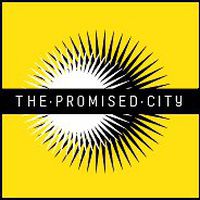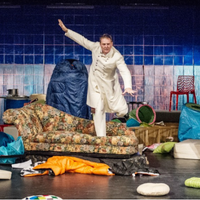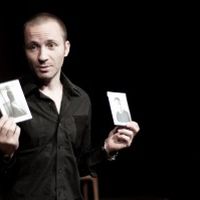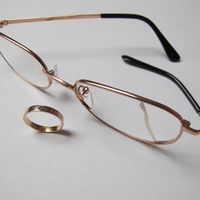Changing audience participation in Polish contemporary art
 Contributed by Anna Lewanowicz
Contributed by Anna LewanowiczArtists and curators pay increasingly more attention to the viewer. Polish performing and visual arts in recent years more often do not just treat the viewer as a passive recipient. Many projects are being developed in non-institutional spaces to take advantage of the context and to experiment with strategies of viewer reception. There is talk of a socially engaged art, community-based art, dialogic art, participatory and collaborative work – all being described as ‘relational practices’.
[caption id="attachment_18911" align="alignnone" width="560" caption=""Ciudades Paralelas" from the Warsaw Hotel Project, image courtesy of the artist."]
Examples of alternative spaces & audience participation in Poland
A good example of a project in a non-traditional space is "X-Apartments", a Polish version of the project, made by the New Theatre (Nowy Teatr) in Warsaw. The author of the original concept, the German playwright Matthias Lillienthal wanted artists to realize their projects in private homes, rather than in a gallery or theatre. He proposed that instead of creating material objects, artists invite spectators to visit homes to experience work prepared by the artists. X-Apartments is a project in which the viewer walks by a certain route, visiting the selected apartments. In each of them artists, sometimes with the participation of tenants, arranged 10 minute-long events, installations and scenes inspired by the places of their context, history and people.
Project X-Apartments relates to the heterogeneity of the city, the neighbourhood history, its people and their everyday practices. It also relates to the specificity of space. For example, previously in Poland in the private spaces were often semi-public in nature: such as “universities” where youth gathered in private spaces to study forbidden topics (called flying universities) and art galleries and places of meetings were wire-taped. Roman Pawlowski, a journalist and participant in X-Apartments relates his experience:
"In the next house a trap awaits us. It begins innocently enough: we are expected to find four notes, each of 100 Polish zloty value, hidden in the room. If we succeed, we can take the money with us. Encouraged by the prospect of earning easy we start methodically search the all angles, refer to the vases and burying on the shelves of the linen. Only after a few minutes, we catch ourselves thinking that this scene we’ve already known from somewhere. We saw it after all in the thousands of films about the occupation. Behind the wall in the kitchen, waiting for the result of the revision, is the family. Innocent fun turns into trauma, we renounce the prize and embarrassed fall back on the street. "
The viewer is here removed from the well-known collective experience "watching the art" in favour of their individual experience, not in silence and darkness, but in his own action, participation and involvement. Such projects refer to the demands of the Situationists, active in the late 50s and 60s in Western Europe, who called for the creation of a situation, rather than passive contemplation of material objects, restoring the direct experience of nature.
TR Warszawa theatre run by Grzegorz Jarzyna, goes even further with a series of projects, "Actions", implemented in 2005-2006. This cycle is proposed to look at the theatre from the perspective of other disciplines – business, advertising, sport – making it a tool for creating social situations. It was to present the viewer with a performative event, which blurs boundaries between what is theatrical and what is real. Each of the projects put the viewer in a specific role, offered him scope for action, leaving the choice to participate or withdrawal from it.
[caption id="attachment_18912" align="alignnone" width="504" caption=""Ciudades Paralelas" from the Warsaw Hotel Project, image courtesy of the artist."]
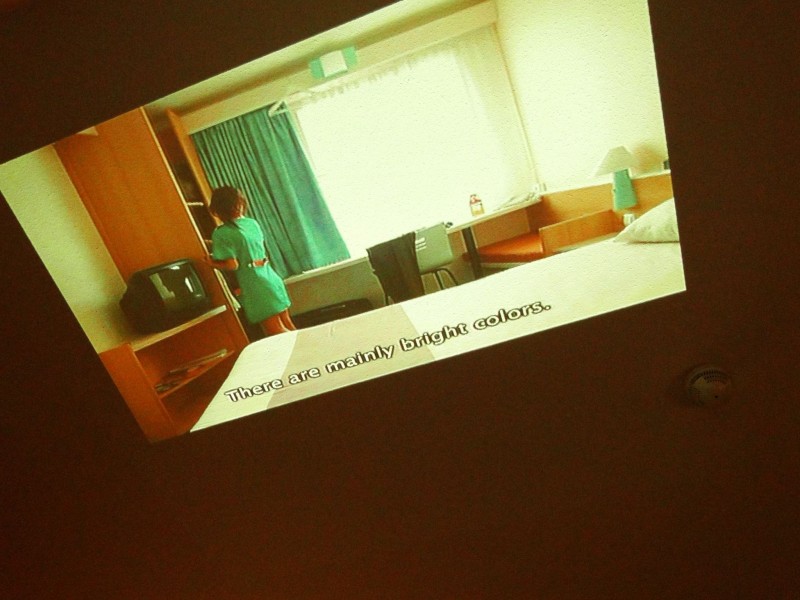 [/caption]
[/caption]One of the actions was "Milk-theatre on the phone" by Rafał Betlejemski. In this performance, the viewer can order a spectacle to their home or business, but could not get any information about it beforehand. "Milk" dramatically exceeded what is commonly accepted as theatre: the creation of characters, the distinction between viewers and viewed, maintaining a safe, anonymous distance between spectator and actor, building illusions. "Milk - theatre on the phone" – like any risky performative work – encouraged the viewer to ponder structures (the theatre, the community, housing) and thereby encourage an element of disobedience, unrest and anarchy. Hence the viewers/participants experienced often surprising, even unexpected reactions. The action was a visit of actors in a private apartment or in an office, during which residents should join actors in creating an advertising campaign for milk. Viewers entered the game, taking the role envisaged for them – they analysed the results of marketing research, devised the campaign slogan. Then there was a sharp break in existing conventions as questions were posed to the viewers/participants: "What if our presentation that we have played against you is not a worthy product? What if it was not done by a well-known theatre company? Would you still be involved and interested, or would you just think it’s bad theatre?”
Another project in this series run by TR Warszawa Theatre was the installation by the German artist Hannah Hurtzig "Black market for useful knowledge and ignorance". In this installation the viewer had to choose a person from 100 experts and could have a conversation with them, which was fought only between them. This project represented the transformation of a theoretical discourse into a kind of show or performance. This then becomes a personal narrative and a private dialogue.
Another action "Sleepless in TR" invited the viewer to an individual experience in solitude. On stage was the entire interior room of the artist Anna Baumgart, and one could hear recorded sounds of the street and the house and see an eight-hour film with the view from her window. The person who could spend a lonely, sleepless night was both spectator and actor.
[caption id="attachment_18913" align="alignnone" width="500" caption=""Greetings from Jerusalem" by Joanna Rajkowska, image courtesy of the artist."]
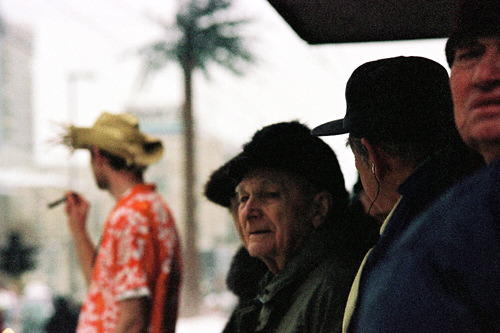 [/caption]
[/caption]Another strategy towards the viewer is Joanna Rajkowska, who speaks about their projects as a way of grabbing attention, of activating the senses and absorbing the body. Their most famous work is "Greetings from Jerusalem Avenue" (2002), whose main element is an artificial palm tree, placed on the traffic island at de Gaule Circle in Warsaw. The genesis of the project dates back to the artist's trip to Israel in 2001 and her attempt to make others aware of the significance of Jerusalem Avenue to Warsaw, the street's history and the vacuum caused by the absence of Jewish community. It was supposed to be also a social experiment, testing whether the Polish society is ready to absorb such a culturally alien item. The spot at which the palm has been placed before the year 2002 was used for a Christmas tree.
“Greetings from Jerusalem Avenue” is a project that was created in a specific context and without this context the work does not exist. It was conceived as an instrument for social change. Needless to say, exotic plants at the latitude of Warsaw do not grow. The aim was that it should appear as a mirage – an exotic element in a well-known urban landscape. It acts on passer-by accidentally, unexpectedly. It changes the fragment of reality, so that a man seems to walk into the area of a film, a fantasy, in which the whole was immersed when he comes into the visual vicinity of the palm, his perception is moved, starting the process of bringing to the fore different kinds of memory and images.
[caption id="attachment_18914" align="alignnone" width="500" caption=""Greetings from Jerusalem" by Joanna Rajkowska, image courtesy of the artist."]
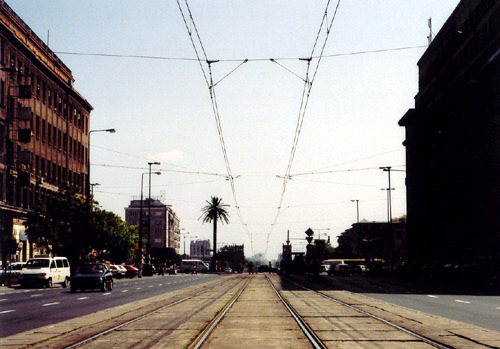 [/caption]
[/caption]Joanna Rajkowska also uses the strategy of participation which was demonstrated in her "Diary of Dreams" attended over a few days by about 250 people willing to fall asleep in a public place for a few hours during the day. Waiting for them were two giant mattresses and bedding in the gallery XX1. An average of forty people a day slept on them. Afterwards, they had an hour to really wake up and write down what they had dreamed, if anything. They wrote in small notebooks that were given out. This is how the (never published) catalogue – a written Diary of Dreams – came to be. People passing next to the gallery, located in the city centre, could see the others who were sleeping. However they could not enter the gallery. De-acceleration of experience was stressed, the sleeping people and their peace were more important than transmission of their sleep/dream.
Diary of Dreams was an attempt to build closeness between people, who do not know one another. This intimacy was to arise through simply lying beside one another, sleeping, not through conscious communication. It was also the answer to a situation where the family has a monopoly on intimacy, a monopoly that leads to isolating people without families. Dividing people into friend (relations of blood or sexuality) and foe, means that we forget that firstly we are only a separate body, which demands intimacy with other bodies. Rajkowska wanted participants not to talk to each other, they communicated with each other only by reading their own dreams. She says: "Relationships are not formed by language, just by physical coexistence in a given place."
Artists, curators and even institutions seek to establish direct as possible communication with recipients, but it also requires willingness on the part of the viewer, from our part.
As one of the most interesting contemporary visual artists, Artur Zmijewski, says:
The art “still produces beneficial cognitive procedures. Using existential algorithms allows us to traverse social structures with ‘eyes open’, to enter hidden places, and real relationships…Instead of drawing graphs, art comes in real situations. Her cognitive strategies do not take reality in bracket, as the science does…To recognize the reality, the art does not treat it condescendingly, art is identical with it. That's impossible – says the science – the observer must be external to the object of observation. The very act of observation, puts the observer ‘outside’. Art meanwhile says that does not have to be so.”
Anna Lewanowicz participated in the ASEF-supported Atelier for Young Festival Managers in May 2011.

